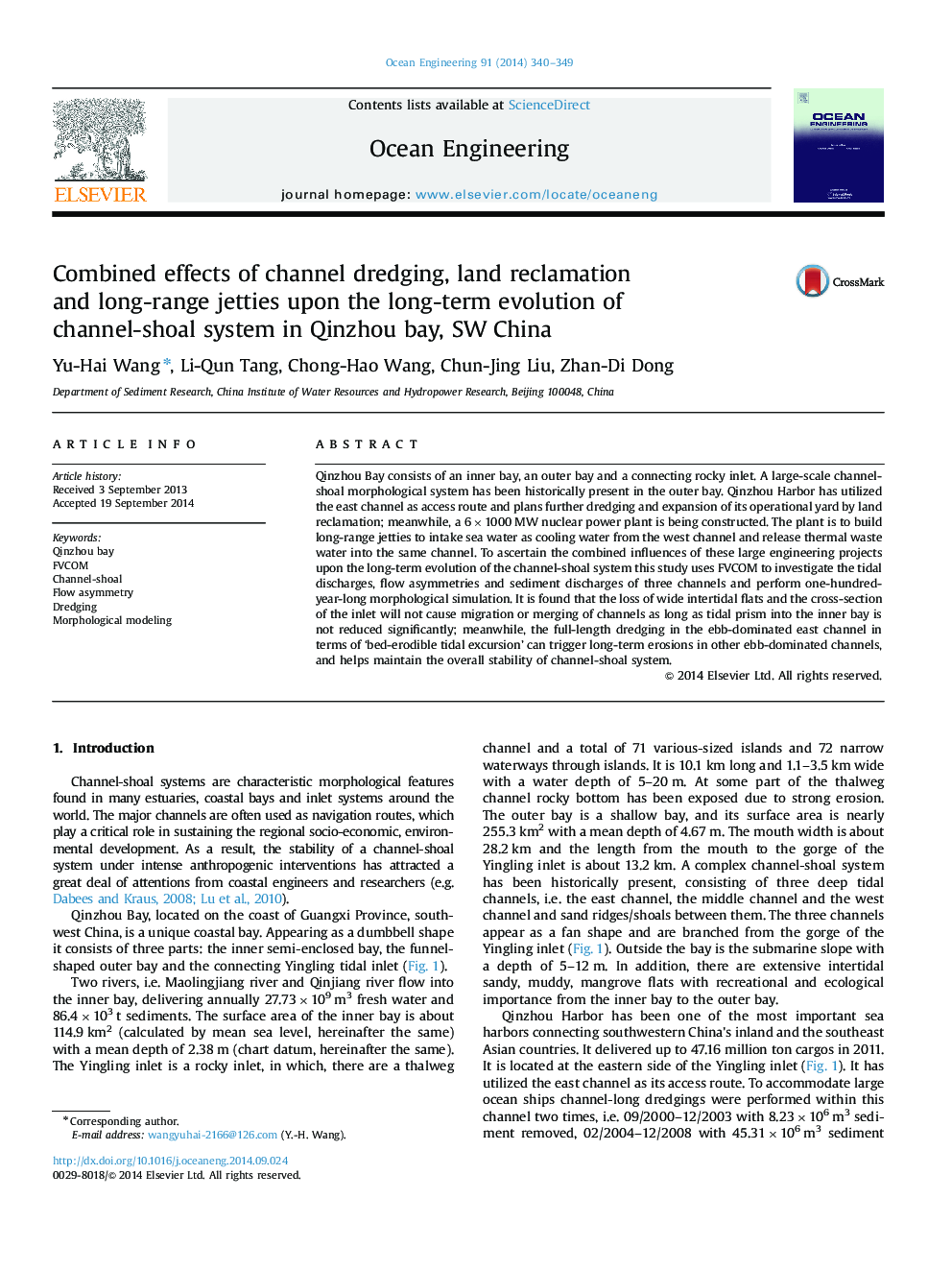| Article ID | Journal | Published Year | Pages | File Type |
|---|---|---|---|---|
| 8066184 | Ocean Engineering | 2014 | 10 Pages |
Abstract
Qinzhou Bay consists of an inner bay, an outer bay and a connecting rocky inlet. A large-scale channel-shoal morphological system has been historically present in the outer bay. Qinzhou Harbor has utilized the east channel as access route and plans further dredging and expansion of its operational yard by land reclamation; meanwhile, a 6Ã1000Â MW nuclear power plant is being constructed. The plant is to build long-range jetties to intake sea water as cooling water from the west channel and release thermal waste water into the same channel. To ascertain the combined influences of these large engineering projects upon the long-term evolution of the channel-shoal system this study uses FVCOM to investigate the tidal discharges, flow asymmetries and sediment discharges of three channels and perform one-hundred-year-long morphological simulation. It is found that the loss of wide intertidal flats and the cross-section of the inlet will not cause migration or merging of channels as long as tidal prism into the inner bay is not reduced significantly; meanwhile, the full-length dredging in the ebb-dominated east channel in terms of 'bed-erodible tidal excursion' can trigger long-term erosions in other ebb-dominated channels, and helps maintain the overall stability of channel-shoal system.
Related Topics
Physical Sciences and Engineering
Engineering
Ocean Engineering
Authors
Yu-Hai Wang, Li-Qun Tang, Chong-Hao Wang, Chun-Jing Liu, Zhan-Di Dong,
